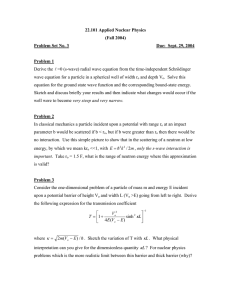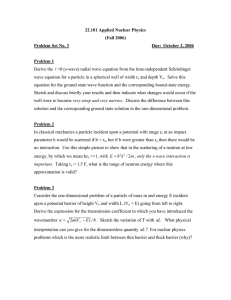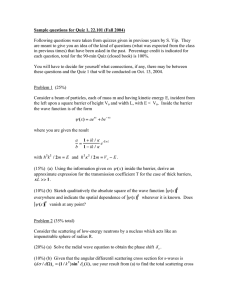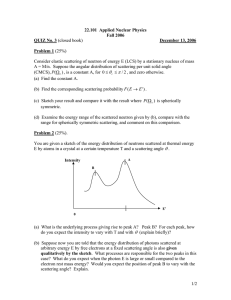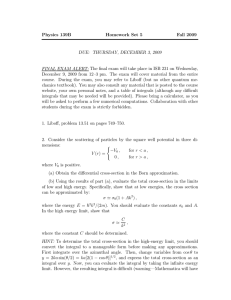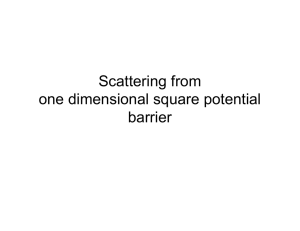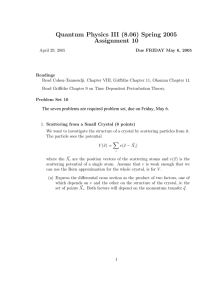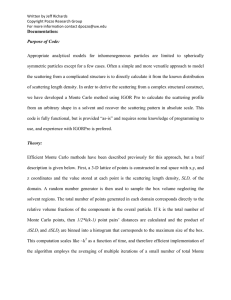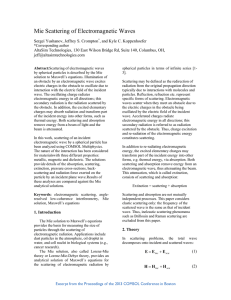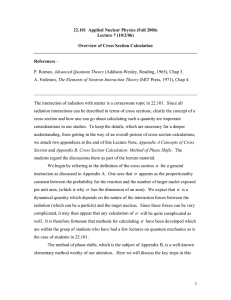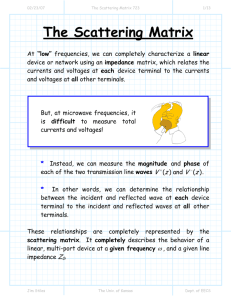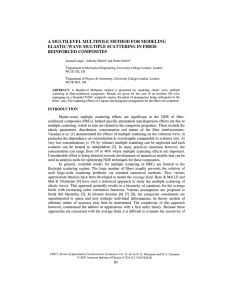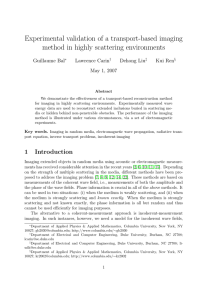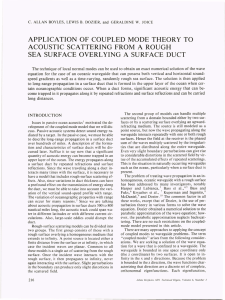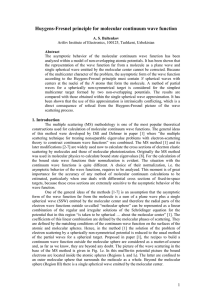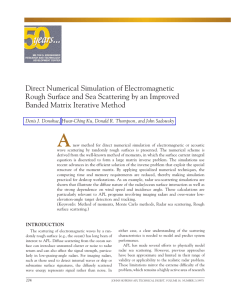ψ
advertisement
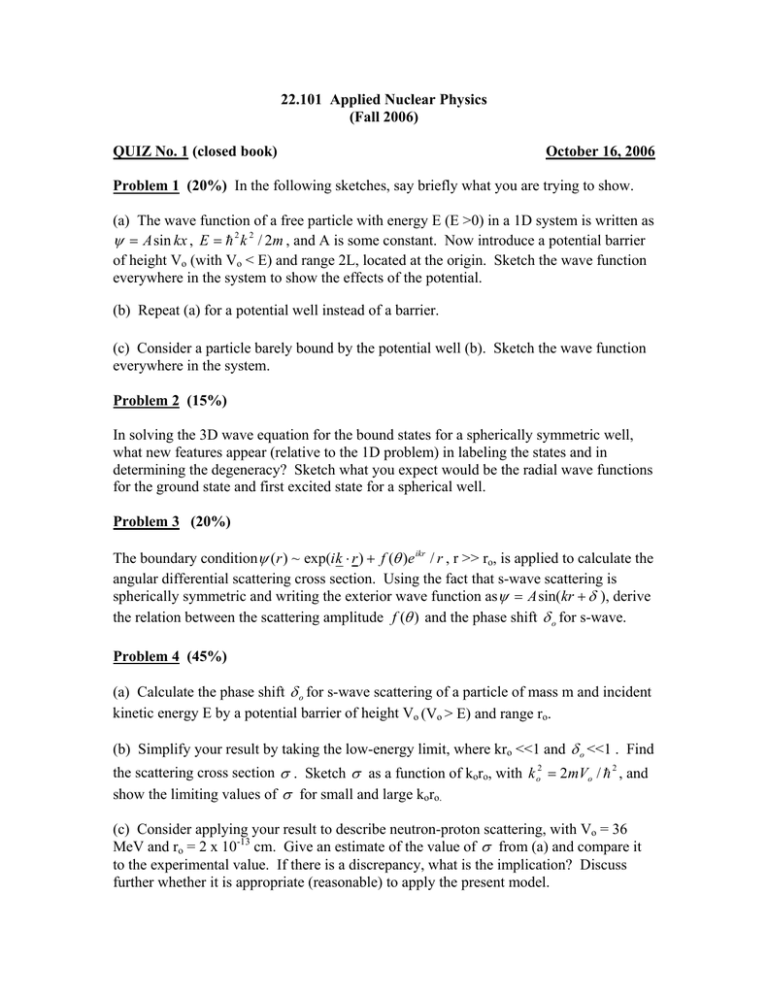
22.101 Applied Nuclear Physics (Fall 2006) QUIZ No. 1 (closed book) October 16, 2006 Problem 1 (20%) In the following sketches, say briefly what you are trying to show. (a) The wave function of a free particle with energy E (E >0) in a 1D system is written as ψ = Asin kx , E = h 2 k 2 / 2m , and A is some constant. Now introduce a potential barrier of height Vo (with Vo < E) and range 2L, located at the origin. Sketch the wave function everywhere in the system to show the effects of the potential. (b) Repeat (a) for a potential well instead of a barrier. (c) Consider a particle barely bound by the potential well (b). Sketch the wave function everywhere in the system. Problem 2 (15%) In solving the 3D wave equation for the bound states for a spherically symmetric well, what new features appear (relative to the 1D problem) in labeling the states and in determining the degeneracy? Sketch what you expect would be the radial wave functions for the ground state and first excited state for a spherical well. Problem 3 (20%) The boundary conditionψ (r ) ~ exp(ik ⋅ r ) + f (θ )e ikr / r , r >> ro, is applied to calculate the angular differential scattering cross section. Using the fact that s-wave scattering is spherically symmetric and writing the exterior wave function asψ = A sin(kr + δ ), derive the relation between the scattering amplitude f (θ ) and the phase shift δ o for s-wave. Problem 4 (45%) (a) Calculate the phase shift δ o for s-wave scattering of a particle of mass m and incident kinetic energy E by a potential barrier of height Vo (Vo > E) and range ro. (b) Simplify your result by taking the low-energy limit, where kro <<1 and δ o <<1 . Find the scattering cross section σ . Sketch σ as a function of koro, with k o2 = 2mVo / h 2 , and show the limiting values of σ for small and large koro. (c) Consider applying your result to describe neutron-proton scattering, with Vo = 36 MeV and ro = 2 x 10-13 cm. Give an estimate of the value of σ from (a) and compare it to the experimental value. If there is a discrepancy, what is the implication? Discuss further whether it is appropriate (reasonable) to apply the present model.
